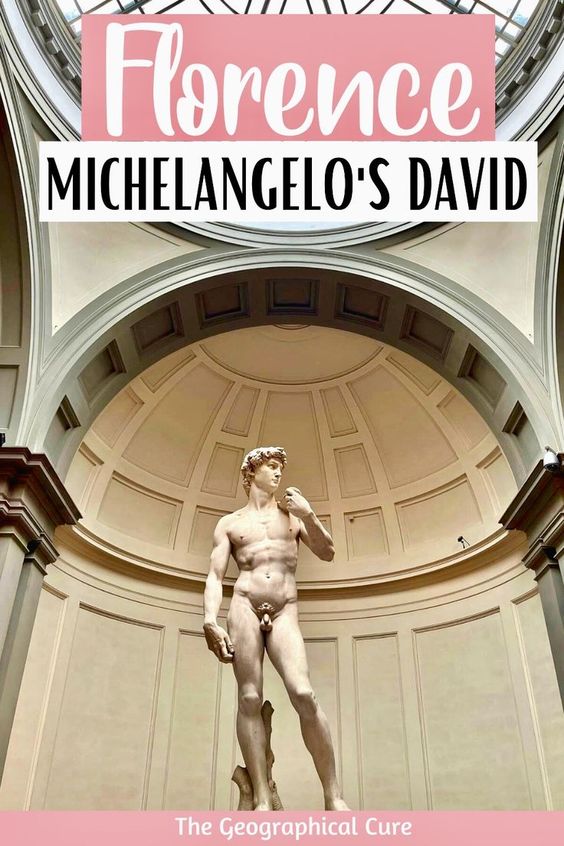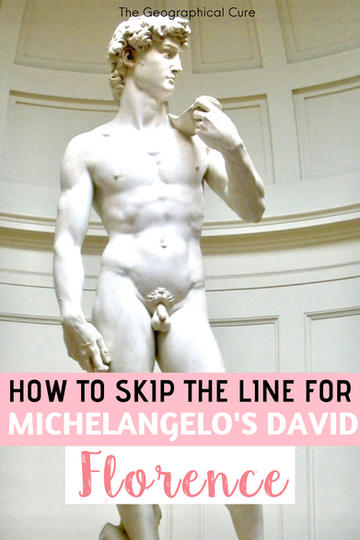Florence’s Galleria dell’Accademia houses Michelangelo’s David, one of the most popular attractions in the city. The museum itself is also world-renowned, making it a must-visit spot for tourists.
Arguably the world’s most famous sculpture, David is an awe-inspiring work of art, displayed in a stunning setting. In fact, Italian artist and art historian Giorgio Vasari once said that “No other artwork is equal to David in any respect.”
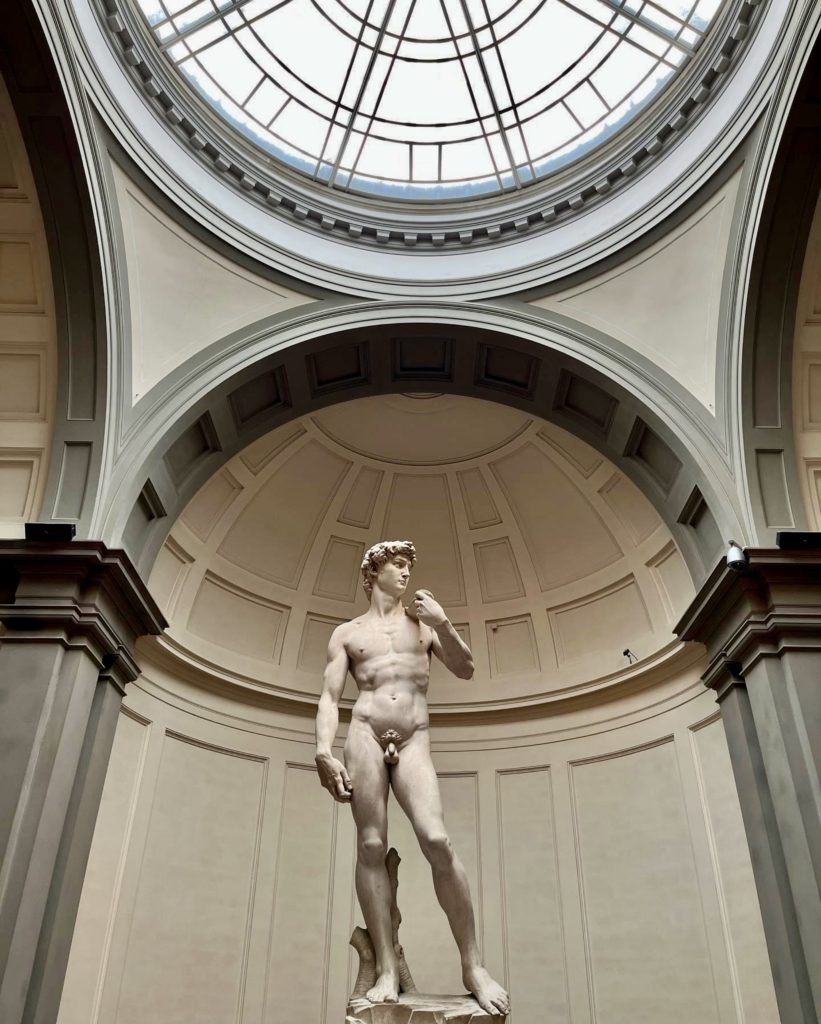
Standing at 17 feet, the Renaissance statue is considered the epitome of male beauty, resembling a modern-day Calvin Klein model with its perfect physical proportions.
Visitors flock to the Accademia in droves to catch a glimpse of David. After the Uffizi Gallery, the Accademia is Florence’s second most visited museum, with crowds so massive that they often block traffic. It’s not uncommon for up to 6,000 people to visit the museum every day.
This guide provides you with a comprehensive history and analysis of the marvel that is David.
More importantly, it tells you how to bypass the long queues at the Accademia, giving you the chance to see the famed statue in person. In addition, I also suggests other famous works of art to see within the museum’s walls.
History of Michelangelo’s David
1. David Theme
David is based on an Old Testament story of an underdog and his giant competitor. David was a young man brave enough to take on the evil enemy, Goliath, on behalf of the Israelites. He went into battle without armor.
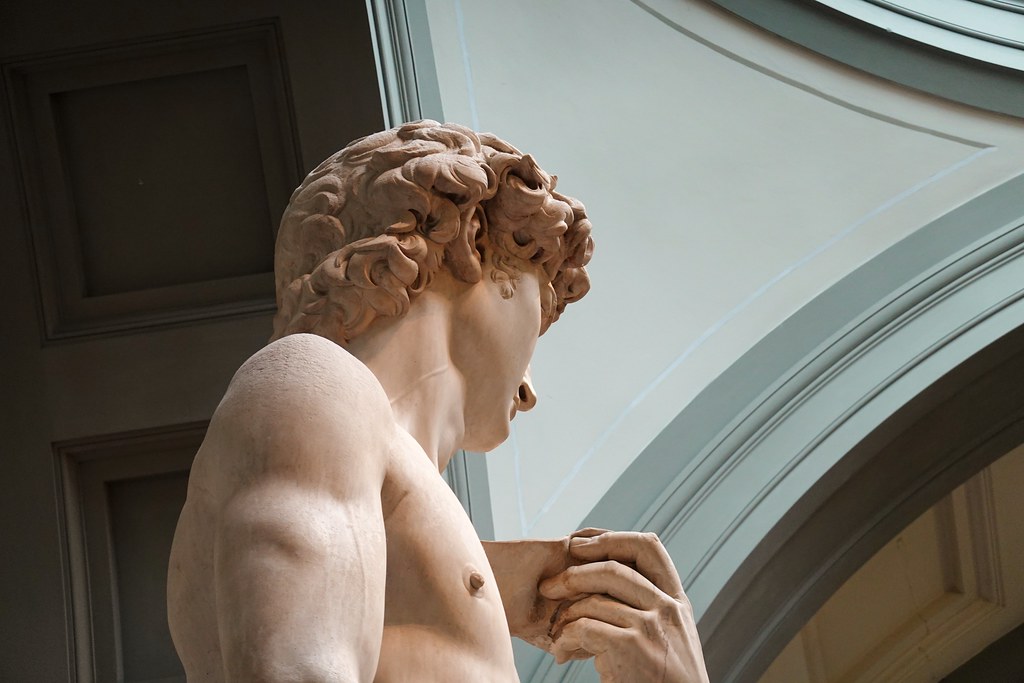
Guided partly by the magical hand of God, David defeats Goliath with an unorthodox choice of weapon — a slingshot and a stone. His aim is true, the stone akin to a bullet.
David hits a lumbering Goliath in the center of his forehead. Goliath falls to the ground and David cuts off his head.
Florence’s Signoria, or City Council, commissioned a statue of this triumphant underdog for Florence Cathedral.
The city intended to place the statue high above in a niche. A massive block of marble dubbed “The Giant” was procured from the Frantiscritti quarry in Cararra.
2. Michelangelo’s Commission
Two other sculptors were given the commission before Michelangelo. But they made little headway with the massive block of marble and gave up. The marble became “the block that couldn’t be carved.”
In 1501, in stepped Michelangelo. He was still relatively young, at age 26.
He’d only completed one major sculpture, the tragically beautiful Pieta, which is in St. Peter’s Basilica in Rome. But he was already well known.
There was intense interest in David. Michelangelo worked on the sculpture in isolation, hidden way from prying eyes.
When David was unveiled, the City Council was stunned. They decided that David was too beautiful for the top of the Duomo.
Instead, David was placed outside the western entrance of the Palazzo Vecchio in the Piazza della Signoria, Florence’s seat of government. David was moved by 40 men over four days.
The statue was unveiled in September 1504. The city fell in love with the sculpture. The citizens deemed it a powerful symbol of the renewed Florentine republic, ready to defend itself.
3. The Wounds of David
David hasn’t lead the easiest life. In 1512, the statue was stuck by lightening. It didn’t do much damage, but changed the weight bearing.
In 1527, republican insurgents threw stones and a bench out of the second floor window of the Palazzo Vecchio. The bench smashed off David’s left arm and nicked off other bits.
The pieces were recovered by a young Michelangelo admirer, Giorgio Vasari. He would go on to paint frescos inside the Palazzo Vecchio.
In 1873, after 369 years, David was moved inside to the Accademia, after a new gallery was built for the statue. Officials moved it inside for conservation and to avoid further weather related damage.
Florence had to build a special crate to transport David, which was a task in and of itself. A scale model of the crate with David is in the Casa Buonarroti museum.
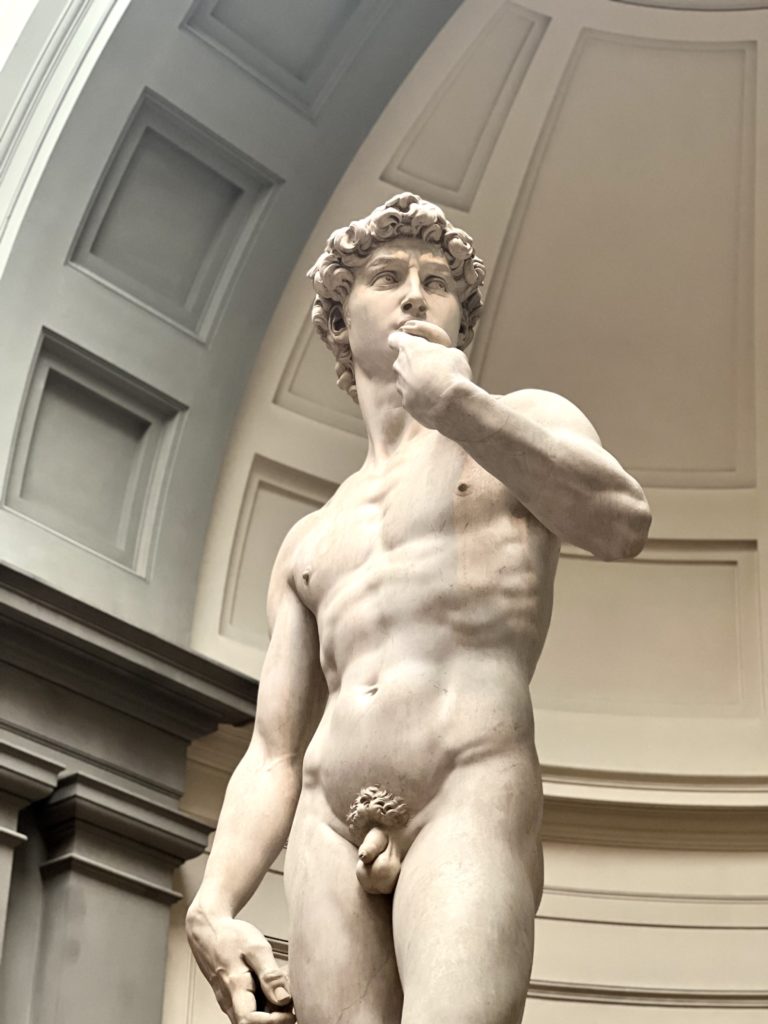
Michelangelo’s David was once partially gilded, but due to exposure to the elements, the gilded surfaces have been lost over time. The statue was also originally polished, but that too has faded away.
If you look closely, you can see some erosion on the marble, such as on the top of David’s right shoulder. Over the centuries, rain also flattened down the curls in his hair.
In 1991, a man who was mentally unstable attacked the statue with a hammer, causing damage to the left foot and breaking off some toes. Fortunately, the damage was repaired, and the statue has been restored to its former glory
4. David’s Weak Ankles
Despite being moved inside, David is still not safe. In fact, the most pressing issue for the sculpture is that it’s weak in the ankles.
In 2014, diagnostics were run and researchers made a dire discovery.
There were tiny stress fractures in David’s ankles moving up the legs. The right weight bearing leg was worse than the left leg.
They concluded that, if the 5 ton David was tilted even 15 degrees, the ankles would break and David would pitch forward and explode.
This state of affairs is due to partly to a defect caused by the lightening strike. The center of gravity of the sculpture doesn’t align perfectly with the center of gravity of its base.
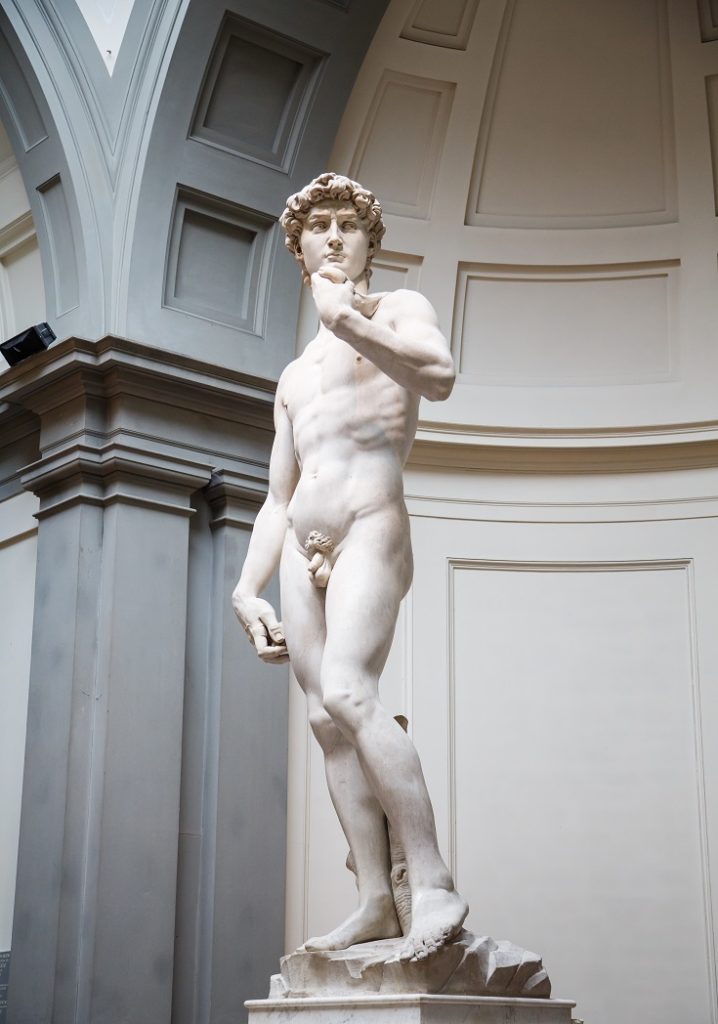
The sculpture was also leaning during its 360 year stint in the Piazza della Signoria. This problem was caused by the ground shifting over time.
Unfortunately, the fissures can’t be fixed. But the gallery intends, at some point, to lift the statue and reinstall it on an anti-seismic base.
That would protect David during earthquakes or natural events. But the Italian government has nothing done yet.
Seeing Michelangelo’s David
When you walk in the Accademia, you’re first confronted with the Hall of the Colossus. Turn left and head into the gallery proper. You’ll see David down a long barrel vaulted nave under a glass dome.
The presentation of David is a stunning one. Your reaction may be to gasp.
The statue will likely exceed your expectations, in contrast for example the disappointment of seeing the Mona Lisa in the Louvre.
The statue is just over 17 feet. It weights 5 tons. The architectural setting makes it appear even larger.
Traditionally, David is portrayed after his victory, often holding Goliath’s severed head. The sculptors Verrocchio, Ghiberti, and Donatello all used this depiction. (You can see their Davids in the Bargello Museum.)
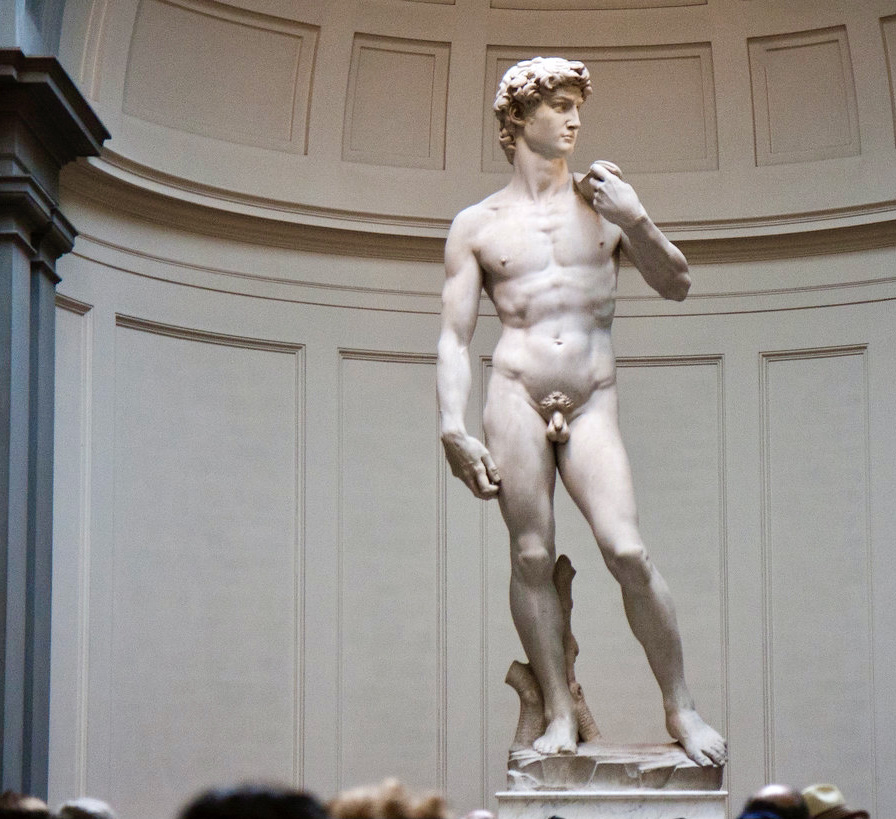
In contrast, Michelangelo’s David is shown in the moment before battle. David is in a classical contrapposto stance — a twisting position where the weight is shifted mostly to one leg. He’s relaxed.
But David looks pensive, as if he’s just spotted the enemy. There’s an intense expression in his eyes. He’s self assured, as if he’s thinking “I can take him.”
You can barely see the slingshot over David’s shoulder. This detail suggests that the battle was won with cleverness, not brute force. David appears like a “thinking man,” a symbol of Renaissance idealism.
READ: Guide To the Michelangelo Trail in Florence
The statue shows Michelangelo’s remarkable knowledge of the human body. His experiments in dissecting cadavers helped him sculpt realistically. You can see David’s bulging veins, taut muscles, and rib cage.
David’s head and his right hand are oversized. That’s most likely due to the fact that the sculpture was intended for a high perch in the Duomo.
But it may also be Michelangelo’s way to underscore David’s concentration, with the hand as a symbol of the action to come or perhaps as a symbol of God.
The statue is 3x the size of a normal human being. By making him so large, Michelangelo became the first sculpture to replicate what Greco-Roman sculptors had done centuries ago.
After David, he was commissioned to paint the frescos on the Sistine Chapel ceiling in the Vatican Museums.
READ: Guide To the Sistine Chapel
Tickets & Tours For Michelangelo’s David
Seeing Michelangelo’s David is one of the best things to do in Florence.
Hence, there are often long lines to get into the Accademia, even though it’s a small museum. Everyone in Florence wants to see this one perfect sculpture.
Be organized. Don’t arrive without a ticket or you’ll waste boatloads of time. But, have no fear, I’ll tell you everything you need to know for an efficient visit to the Accademia.
The cheapest tickets are sold at the Accademia ticket office. But there are long queues for that as well.
It’s really essential to purchase a ticket online or you likely won’t get in. Click here to pre-book a timed entry skip the line ticket. A Florence City Card will also give you skip the line access.
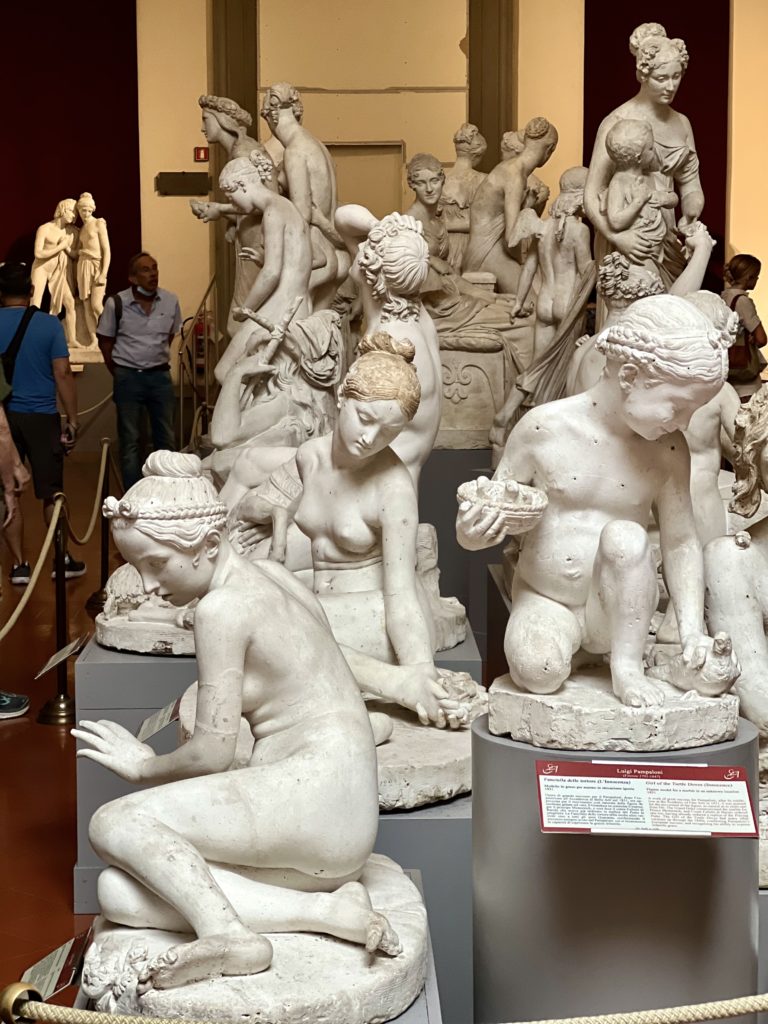
The Accademia is also a popular place to book a guided tour, though there is quite a bit of signage. There are several options.
You can book:
- a skip the line ticket + small group guided tour
- a 3 hour walking tour of Florence that includes the Accademia
- a 5 hour guided tour that includes both the Accademia and the Uffizi
You can also visit the David online from the comfort of your home. Here’s a 360 video of David.
If you can’t secure a ticket to the Accademia, there are exact copies of David in the Piazza della Signoria (its original location) and the Piazzale Michelangelo.
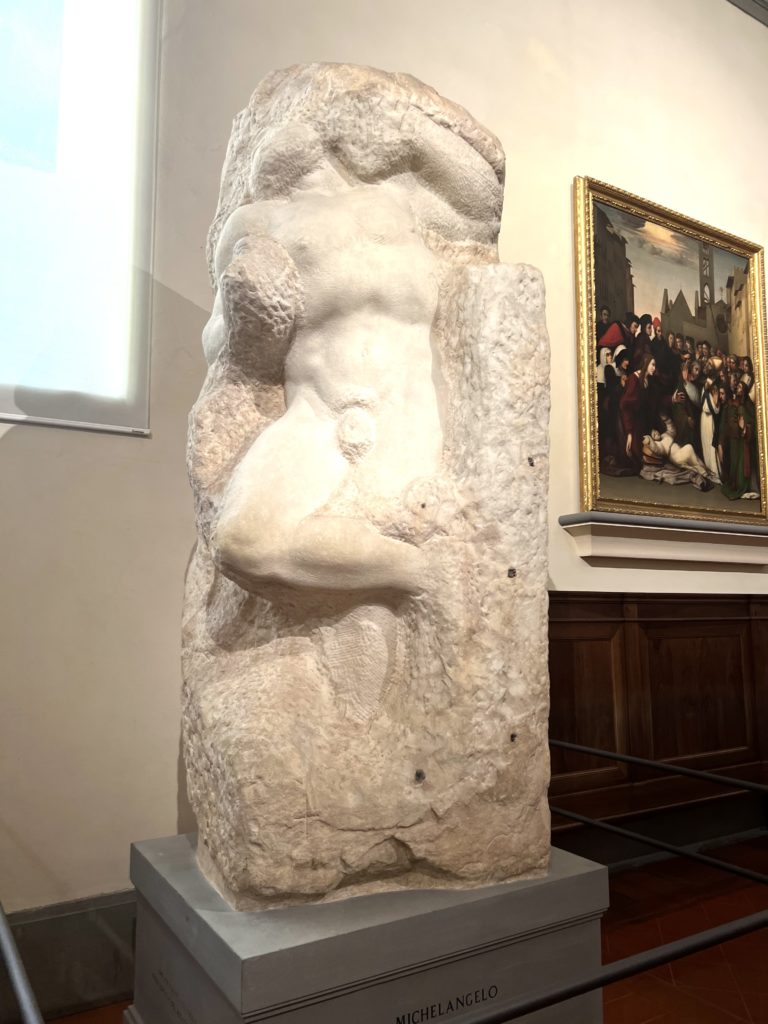
What To See at the Accademia Besides David
Aside from seeing Michelangelo’s David, there’s plenty of other magnificent art in the Accademia.
1. Michelangelo’s Slaves
You can also see Michelangelo’s unfinished Slaves in the Hall of the Prisoners.
The slaves have been named The Awakening Slave, The Young Slave, The Bearded Slave, and The Atlas.
They were likely intended for the Tomb of Pope Julius II, a project that had a tortured history and underwent continual revision.
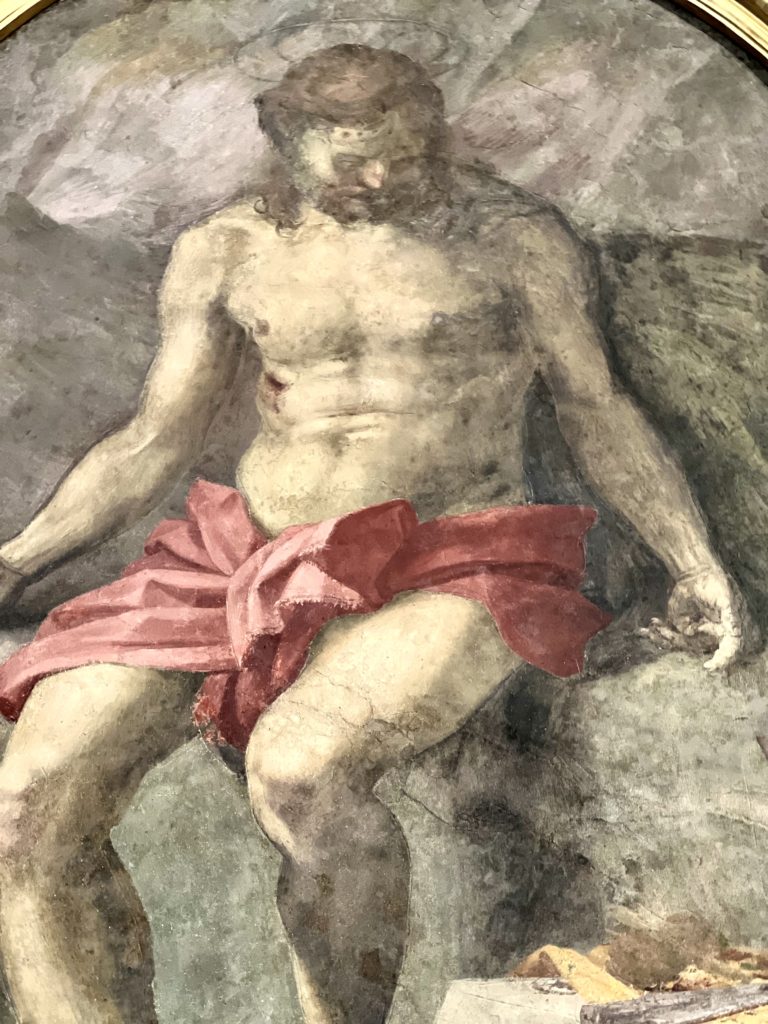
Though unfinished, the Slaves give you an understanding of how Michelangelo worked. They seem to be struggling to free themselves from the marble.
After Michelangelo’s death, they were given to Cosimo I de’ Medici. He placed them in the Buontalenti Grotto in the Boboli Gardens. For preservation, they were transferred to the Accademia in 1909 and replicas placed in the grotto.
The Accademia also houses Michelangelo’s unfinished sculpture of St. Matthew. It was intended to be one of 12 apostles on Florence cathedral. But the project was mysteriously abandoned.
In the Hall of Prisoners, you’ll also find paintings by Andrea del Sarto and Fra Bartolomeo.
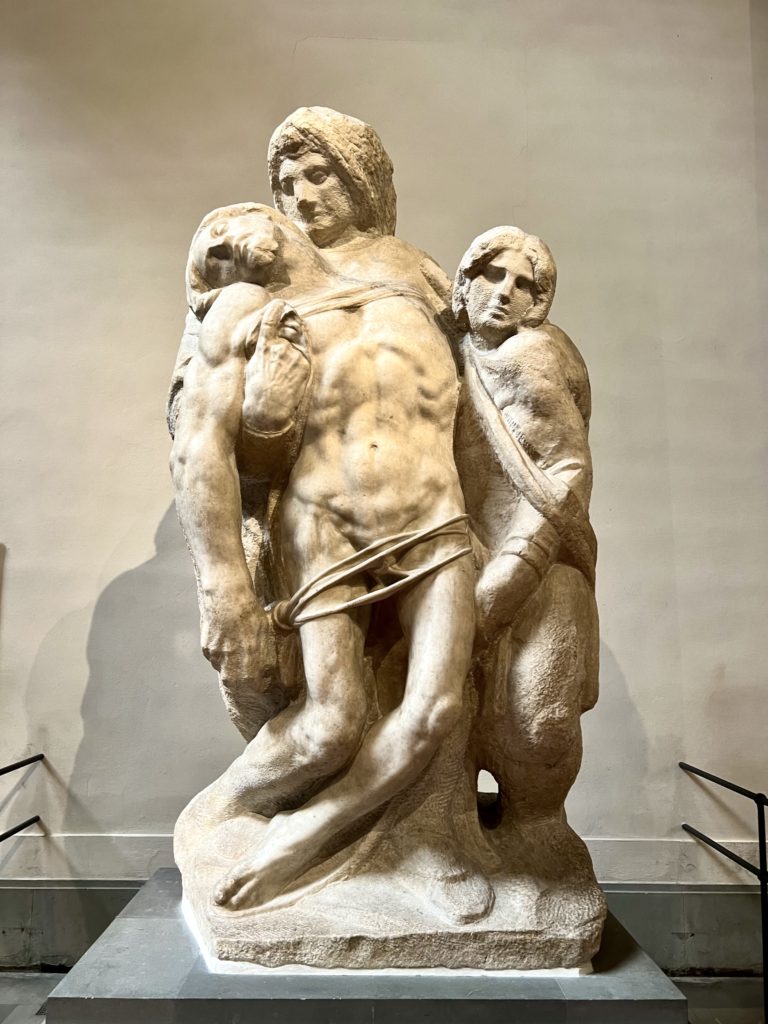
2. Pieta From Palestrina
This Pieta has a possible attribution to Michelangelo. The pieta, Mary holding her dead son, was a central theme in Michelangelo’s work.
He carved the famous Vatican Pieta in St. Peter’s Basilica when he was very young. But he returned to the subject often in his mature years.
But the attribution is iffy. There’s not much information about the statue in 16th century sources. It has been variously referred to as the work of Michelangelo, Bernini, or their workshops.
Bernini would make some sense as he was an ardent admirer of Michelangelo and in particular, loved Michelangelo’s Bandini Pieta. That pieta is the Duomo Museum in Florence.
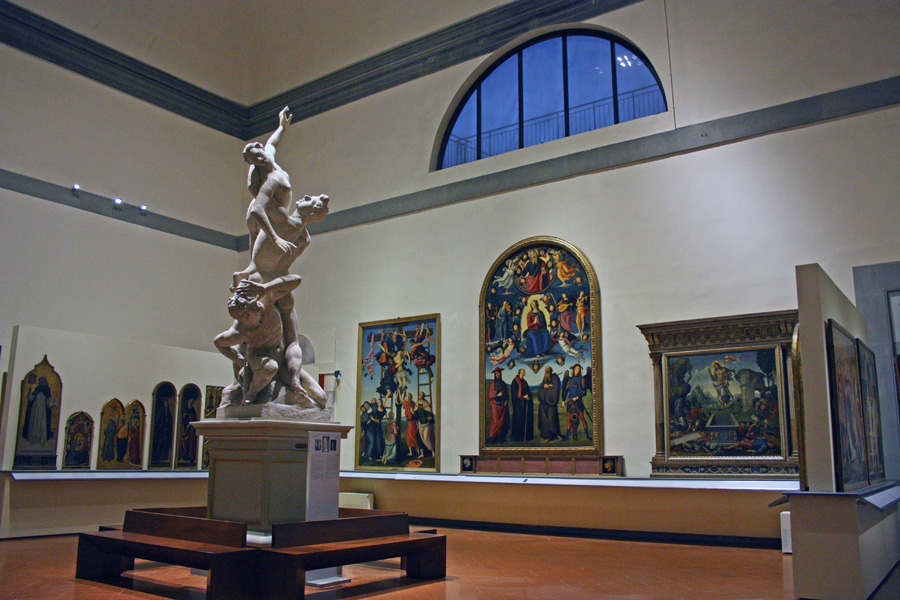
3. Hall of Colossus
In the Hall of Colossus, there are paintings by the leading artists from the 15th and 16th centuries — Sandro Botticelli, Paulo Uccello, Filippino Lippi, and Domenico Ghirlandaio, Michelangelo’s teacher for one year.
Perhaps the most majestic piece is the beautiful Vallombrosa Altarpiece by Perugino depicting the assumption of the virgin. It’s a complex masterpiece of extraordinary quality. Some of the portraits in the altarpiece are said to be Perugino’s crowning achievement.
There are also two Botticelli madonnas. And a brilliant piece by Ucello called Scenes of Hermit Life.
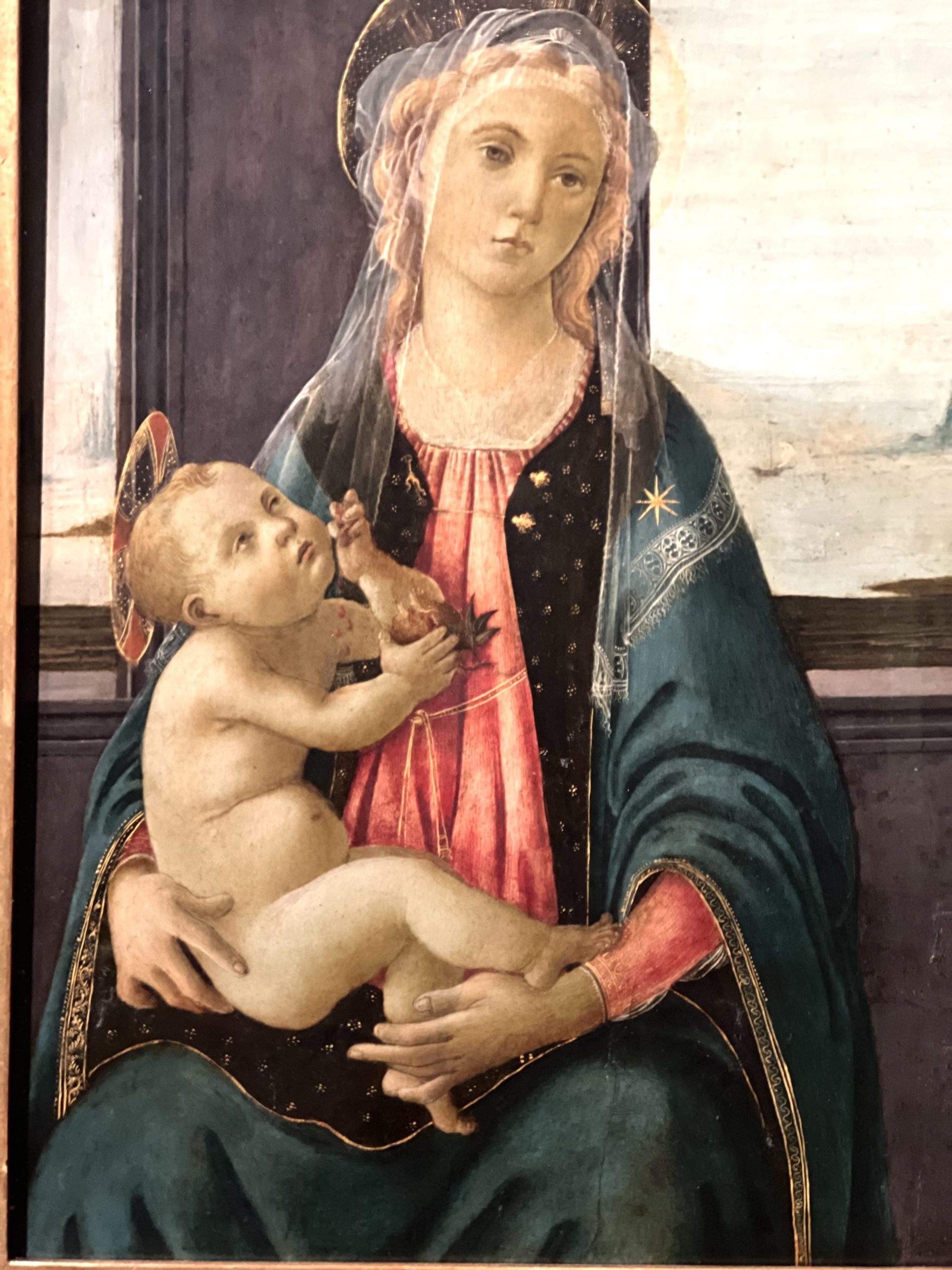
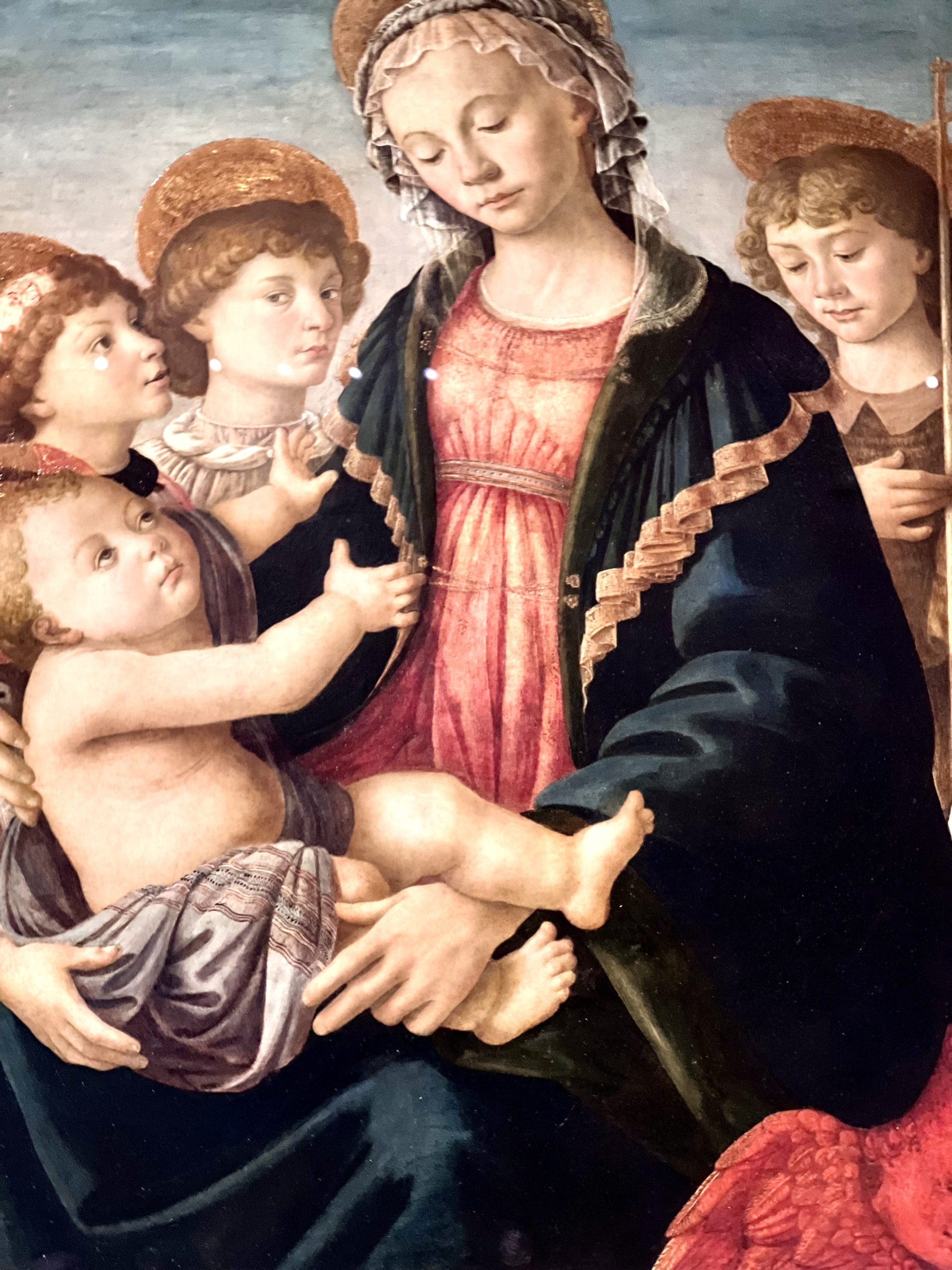
In the center of the room is the unfired clay model of Giambologna’s famous Rape of the Sabine Women.
The original marble sculpture is still in the Loggia dei Lanza in the Piazza della Signoria.
The sculpture represents the first time an artist had tried to make such a tightly knit group of multiple figures in spiral-like movement.
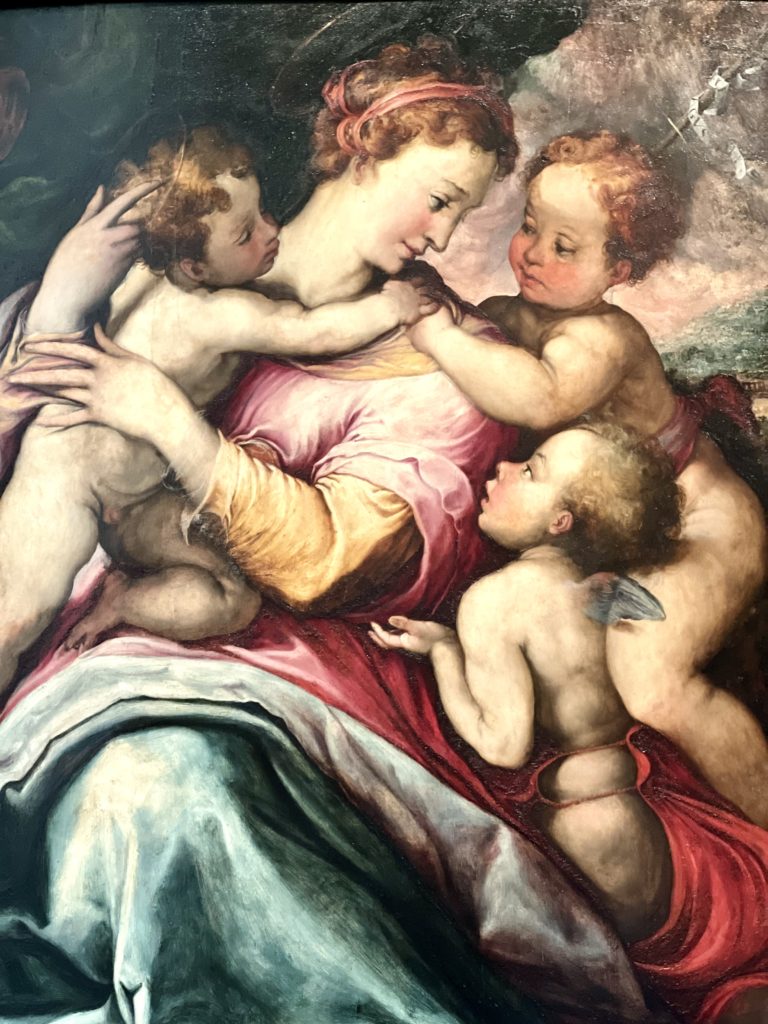
4. Side Wings of the Tribuna
There are two side wings off the David Tribuna. They hold paintings by Michelangelo’s contemporaries.
On the right, you’ll find Mannerist paintings, including works by Poetelli, Poppi, and Salviati.
To the left, there are altarpieces by painters of the Counter-Reformation, including Bronzino and Alessandro Allori.
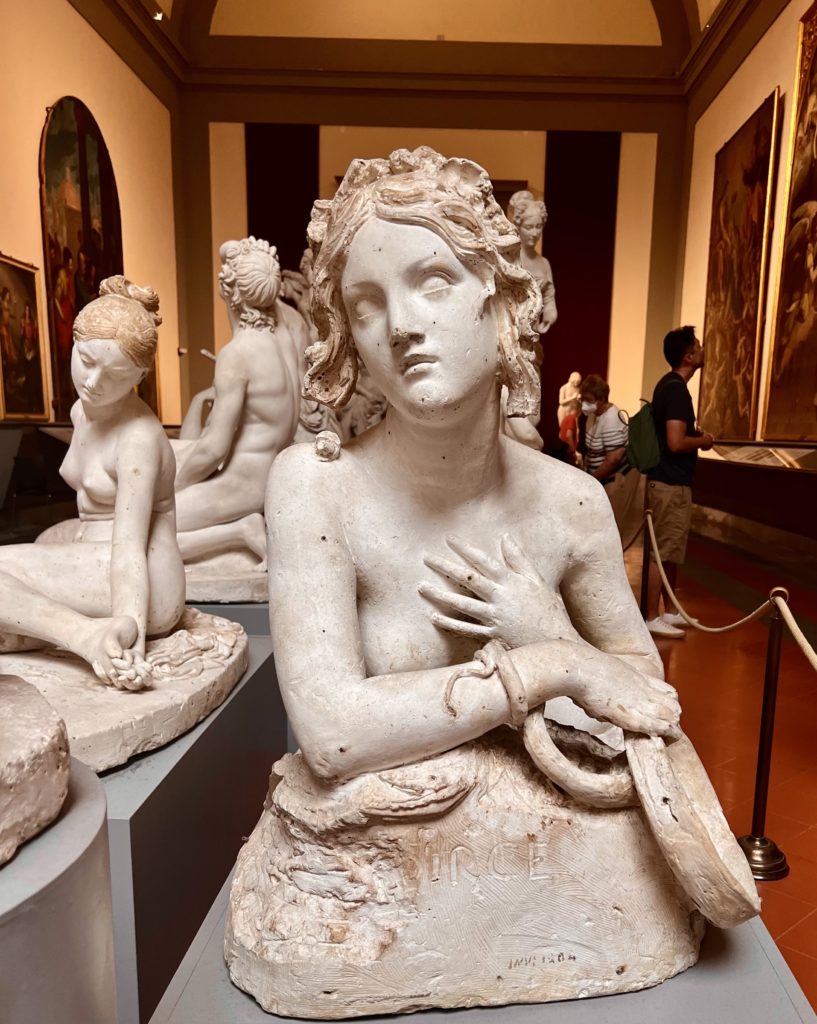
5. Hall of Models
In the Hall of Models, you’ll find a selection of 19th century plaster casts by Lorenzo Bartolini.
He was one of the great sculptors and brilliant professors of the Academy. The most famous piece is the Demidoff Monument.
You can witness first hand the evolution of Florentine sculpture from Neoclassicism to Romanticism.
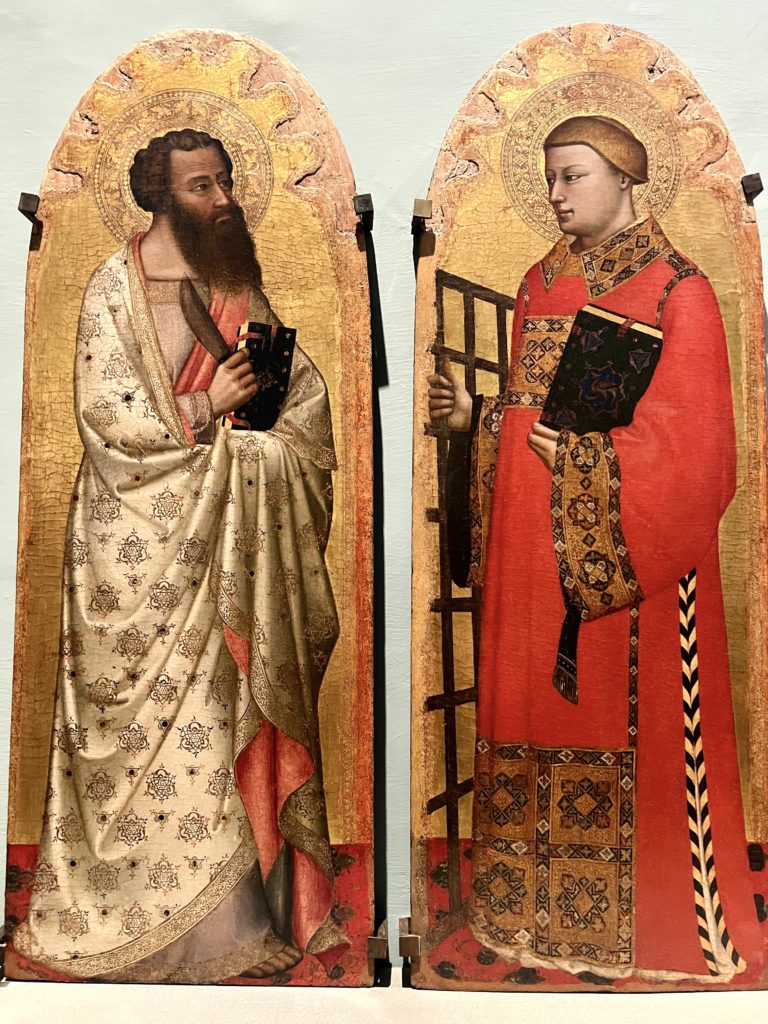
6. 14th Century Room
This room is dedicated to Florentine Gothic paintings from the Middle Ages. You’ll see a lot of gold relief.
There are beautiful pieces by Taddeo Gaddi, Bernardo Daddi, Giotto, and Orcagna.
One of the most famous paintings is Pacino di Buonaguide’s Tree of Life. Pacino was a famous illuminator and his painting bursts with color.
There’s also a rare detached fresco by Giotto, Shepherd with his Flocks. It was once in the Badia Fiorentino.
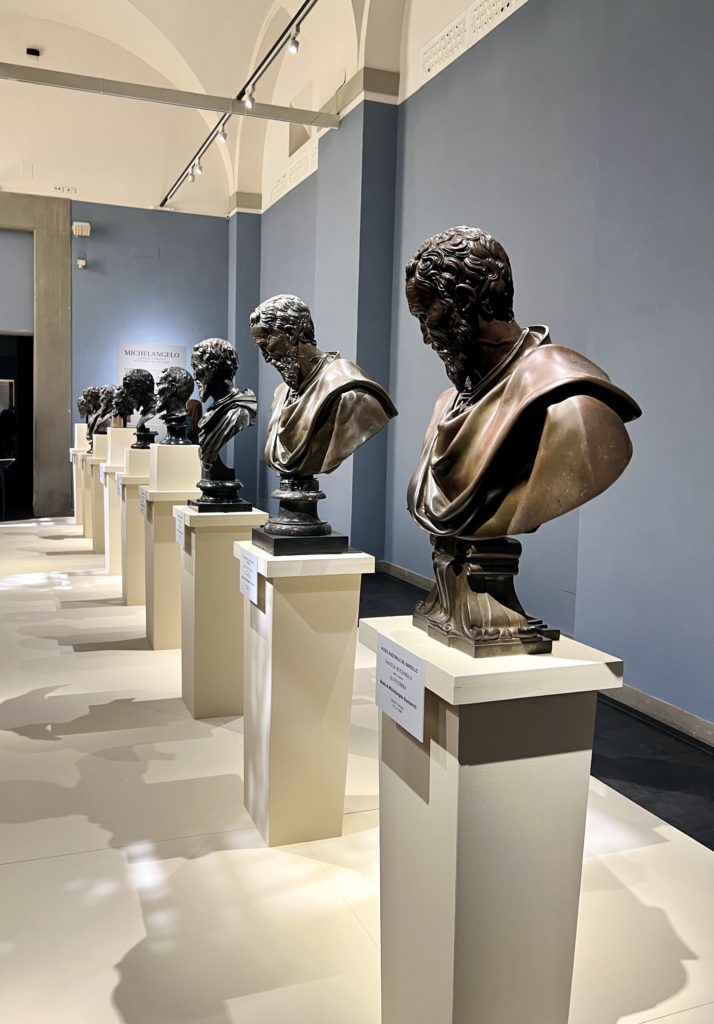
7. Michelangelo Bronzes
When I visited, there was an exhibition of nine busts of Michelangelo by Daniele da Volterra.
He was a friend of Michelangelo’s. The busts were commissioned by the artist’s nephew.
8. Museum of Musical Instruments
This museum was added to the Accademia in 2001. It houses over 50 musical instruments from Medici and Lorraine collections from the 17th through 19th centuries.
The most singular piece is the Tenor Viola by Antonio Stradivari. It’s the only piece created by him that is in its original state.
Practical Guide & Tips For Visiting the Galleria dell’Accademia
Address: Via Riscasoli 58, near Piazza San Marco
Opening Hours:
Tuesday to Friday 8:15 am to 6:50 pm, entry every 15 minutes. Closed Mondays.
The ticket office closes at 6:20 pm. Children under 18 are free. But you still have to purchase a timed entry “free” ticket for then to enter.
In the past, the first Sunday of the month there was free entry. But that has been suspended for now because the crowds would be enormous.
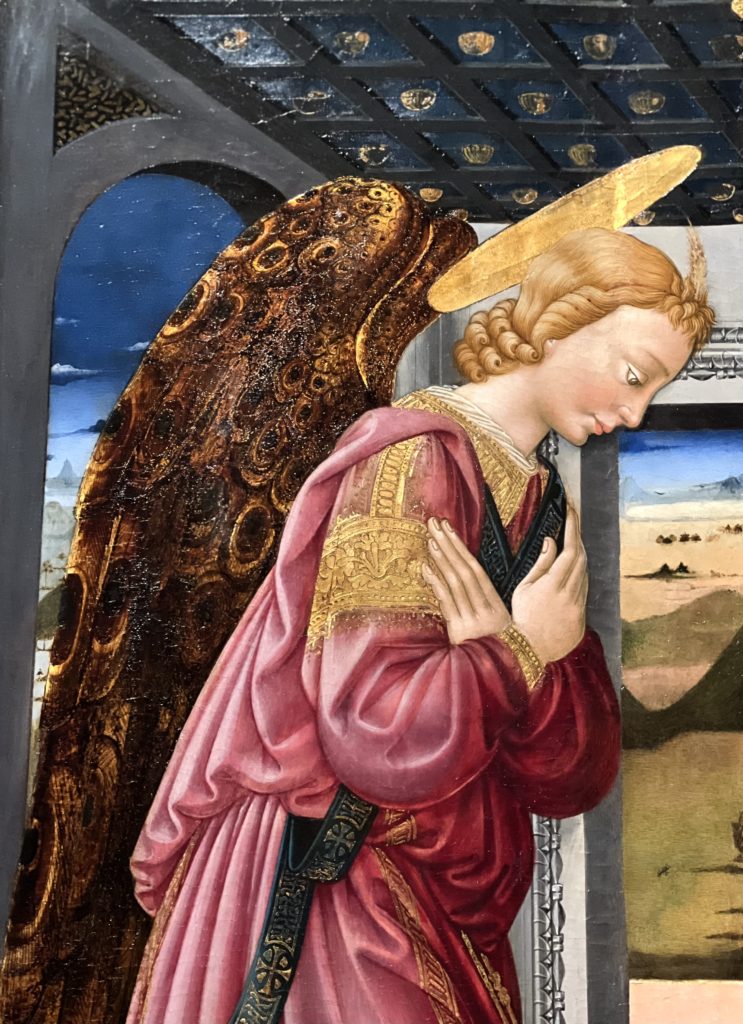
Ticket prices:
Full ticket: € 20, including the reservation time slot and online fees. The tickets on the official website can be booked up to a month in advance.
But even the Accademia tells you that it’s most convenient to book a ticket through a reseller.
Queuing Up: When you arrive at the museum, there will be 3 lines, so make sure to get in the right line. One line will be for people seeking tickets. The two other lines are for the people who have the next two time slot reservations.
Audio Guide: Available in Italian, English, French, Spanish, German, and Japanese Cost: € 6 for one-person device, € 10 for a two person device
Pro tip: You can only take photos without a flash.
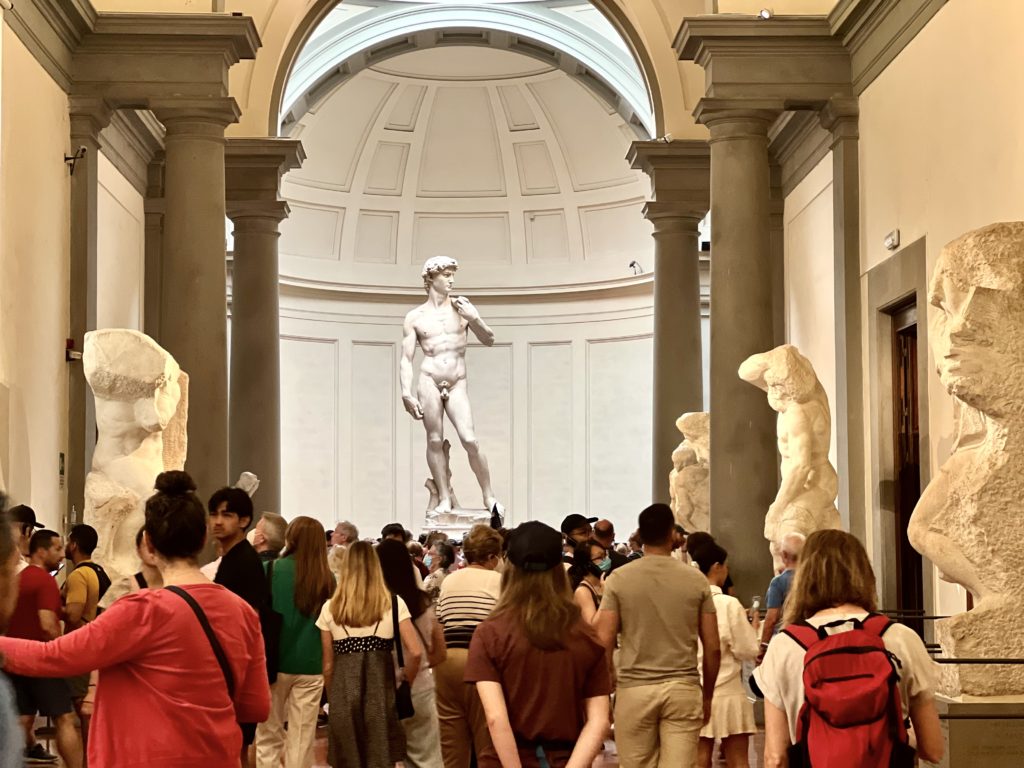
I hope you’ve enjoyed my guide to seeing Michelangelo’s David in Florence. You may enjoy these other Florence travel guides and resources:
- 1 day itinerary for Florence
- 3 day itinerary for Florence
- Best museums in Florence
- Hidden gems in Florence
- Must see sites in Florence
- Florence art bucket list
- Best day trips from Florence
- Guide to the Medici Palaces
- Guide to the Uffizi Gallery
- How To Visit the Duomo
- Guide to Santa Croce Cathedral
If you’d want to know how to see Michelangelo’s David in Florence, pin it for later.

